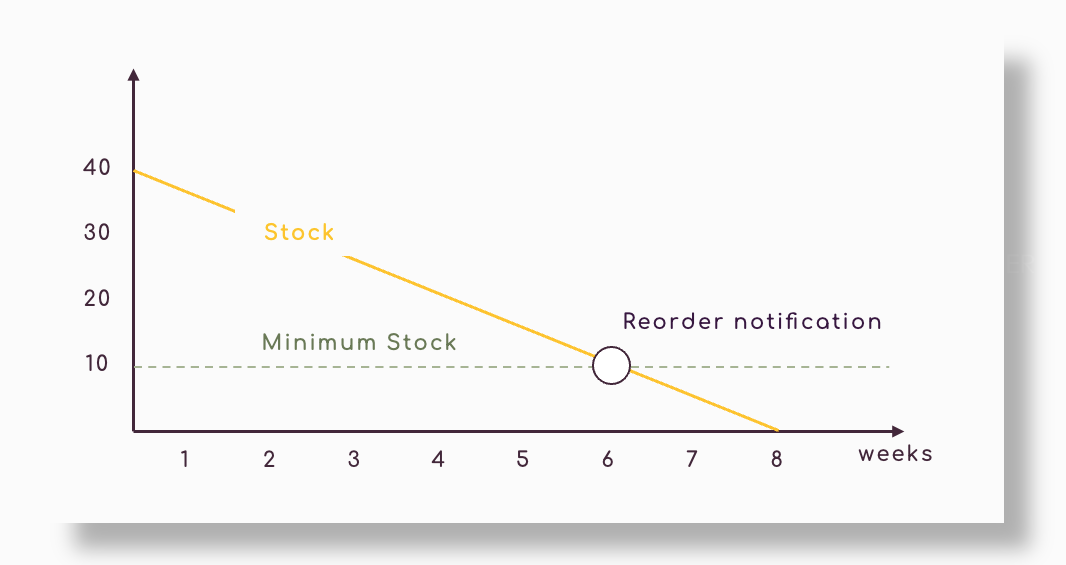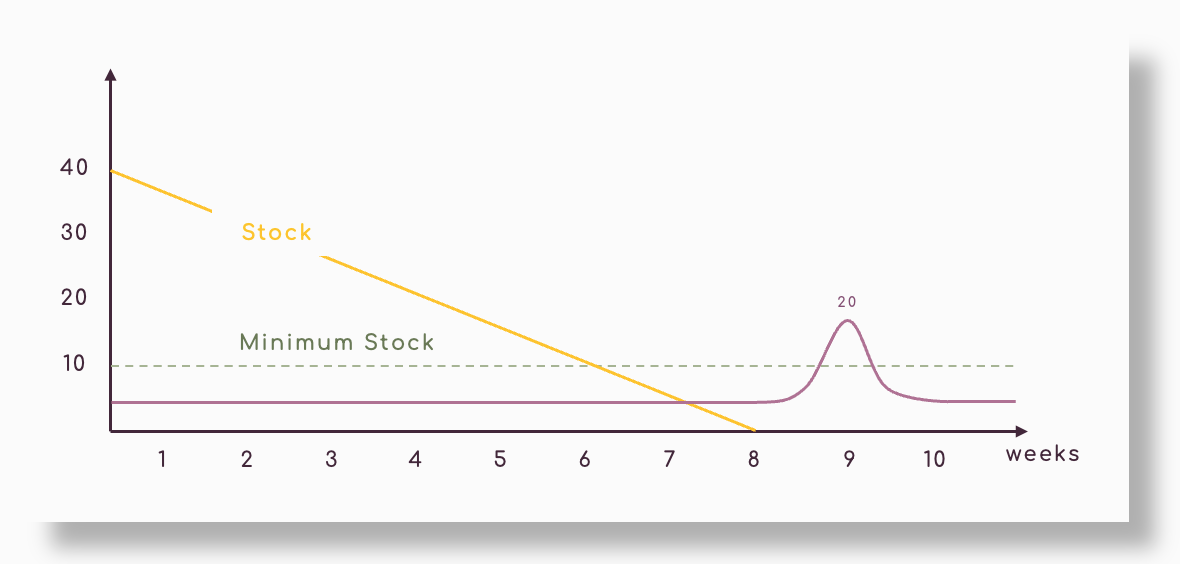Minimum Stock
In this article
we'll describe how you can use Minimum Stock as a parameter for your order recommendations and how it works in relation to the Ideal Stock.
Minimum Stock & Reorder Points
In a traditional way, the Minimum Stock creates a so called reorder notification, or an alert when your stock reaches a level below the minimum parameter. In the example below, the Min Stock is set to 10 units:

Let's assume you sell 5 units of this product per week. That means, in 8 weeks you would be out of stock and in 6 weeks you would get an order notification, when the stock in your warehouse reaches 10 units.
The problem with this approach is that you do not always have time enough to reorder the product. Say for example, in week 6 you sell 10 units. All of a sudden, you are completely out of stock and will miss sales in the following weeks.
Another problem - what if your suppliers needs 2 weeks of lead time? By the time you have placed the orders and have the new stock in your warehouse, you will also miss sales.
As you can see in the example above, after 6 weeks, the stock reaches a level below the 10 units you set as a minimum. If sales picks up, you would only have approximately 1,5 to 2 weeks to re-order this product from your supplier before you completely run out of stock.
Min Stock in my.shelfplanner
The logic that Shelf Planner uses to determine your re-order point is always based on your sales forecast. This way, we ensure you always have enough time to react on trends, whether they go up or down.
In the illustration below, we tried to explain how the Min Stock is used, in relation to your sales forecast. To understand when it is the best time to reorder, your supplier lead times are essential. Let's assume your supplier's lead time is 2 weeks. That means you want to make sure you order in time so you can always have 10 units in your warehouse

That's why Shelf Planner uses the Minimum Stock as an indication. The algorithm will pick up when to reorder if it identifies the time you will be reaching your minimum.
Min Stock vs Ideal Stock
As we mentioned above, the order recommendation for your products is always based on your sales forecast. This means that if the system picks up you have a higher Ideal Stock than a Min Stock, it will recommend to order based on your ideal.
To illustrate how this works, let's take the example we have used above and assume that you are still selling 5 units per week, you are planning a marketing activity, a campaign or something that will boost your sales in a few months.

For example, in week 9, you plan a mail send out to all you customers with a discount that will boost sales across your store. With a minimum stock rule, there is no way of knowing if you need to reorder to make this campaign work or not. After all, you could offer your customers other products, but there is a risk of missing sales if you don't stock up in time.
That is where the ideal stock kicks in - based on the Weeks of Stock and Lead Time settings for your products, the system will identify this spike in sales and will inform you there is a potential lost sales opportunity in a few weeks. In other words, the Ideal Stock is leading in this case when it is generating the order proposal.
When to use Minimum Stock
Minimum stock, also known as safety stock or buffer stock, is the lowest quantity of inventory that you aim to have on hand to avoid stockouts during normal demand fluctuations and lead time variability.
1. Demand Stability
For items with stable and predictable demand, minimum stock levels can be set based on historical sales data and lead times to ensure sufficient inventory.
2. Critical Items
For critical items that must not run out of stock under any circumstances, setting a minimum stock level ensures there is always a buffer to meet unexpected demand or supply delays.
3. Less Frequent Replenishment
For items that are replenished less frequently, minimum stock helps ensure that you have enough inventory between replenishment cycles.
4. Long Lead-times
When lead times from suppliers are long or uncertain, maintaining a minimum stock ensures that you have enough inventory to cover the replenishment period.
